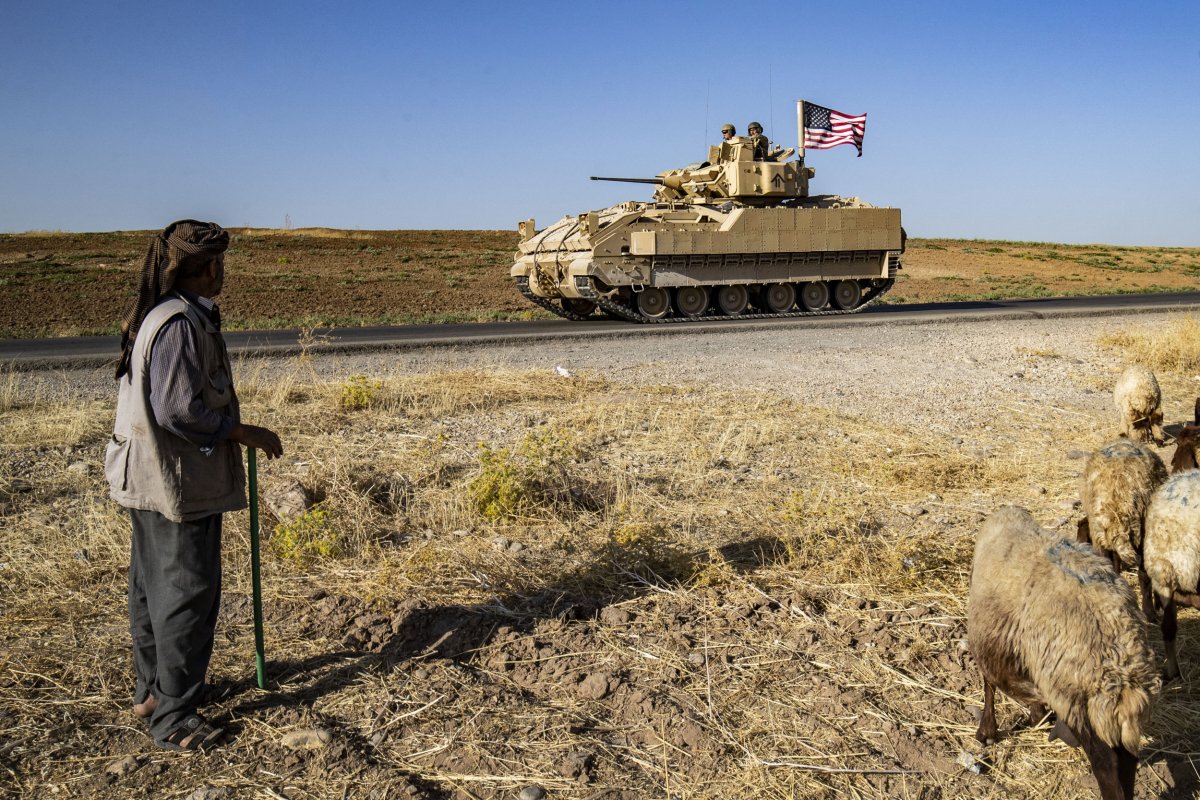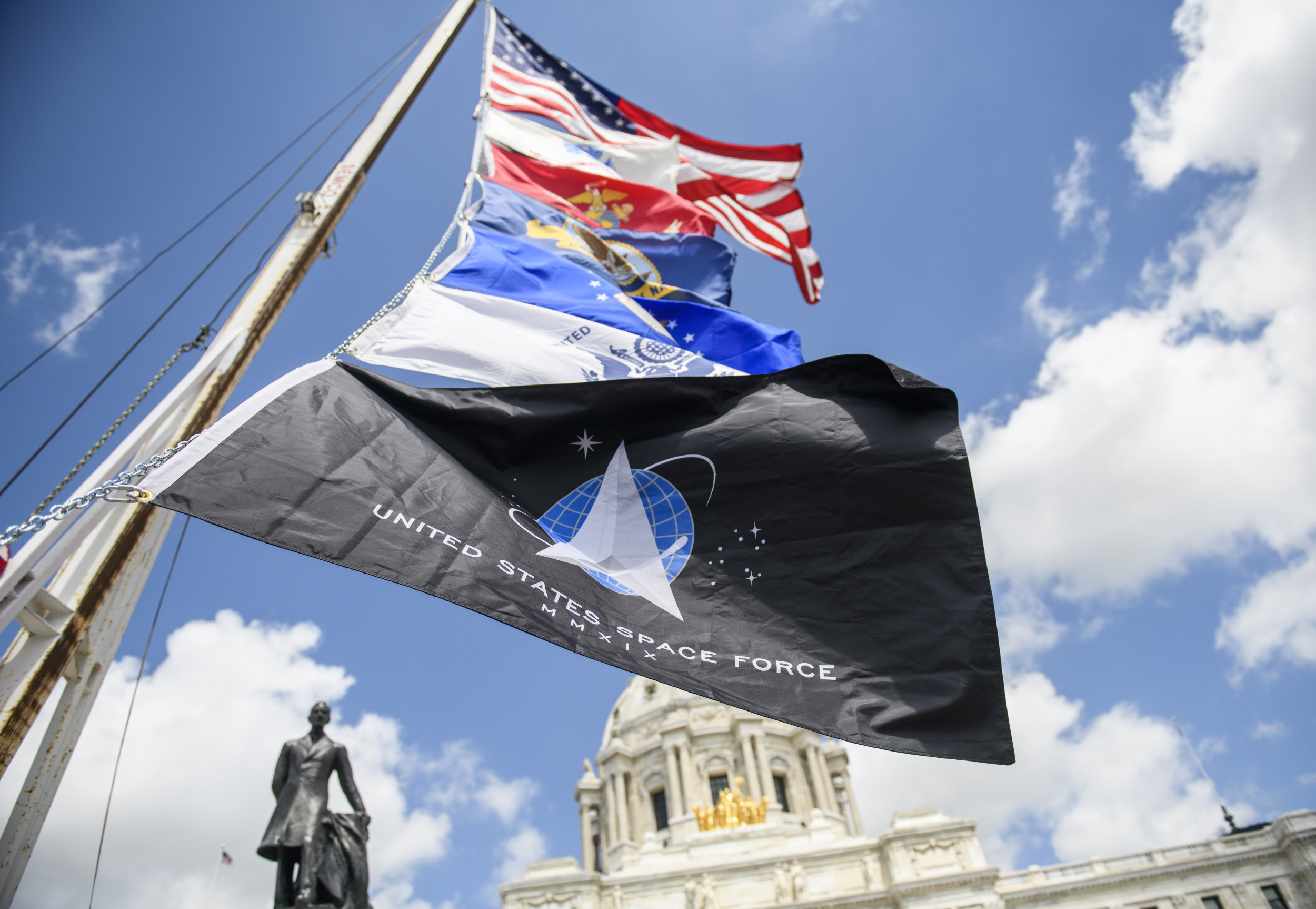By and large, Syria has dropped off the radar. Whatever international press the country receives is usually inspired by the periodic updates U.N. officials deliver to the U.N. Security Council—updates replete with urgent warnings about a humanitarian crisis, continued violence, and an exponentially depreciating Syrian currency.
Yet in the last few weeks, Syria's trials and tribulations have returned to the front pages. While the civil war between dictator Bashar al-Assad's government and its armed opponents has largely wound down, plenty is still going on in the country.
The most significant story emerging out of Syria this week occurred in the eastern province of Deir ez-Zor, host to most of the country's meager oil reserves and agricultural resources. This area has been split between pro-government forces and the U.S.-backed Syrian Democratic Forces (SDF), with the Euphrates river serving as the dividing line. Deir ez-Zor was a prime center of gravity for the Islamic State when it ruled approximately 8 million people across a stretch of Syria and Iraq in 2014-2015, a so-called territorial caliphate that has been dead and buried for the last four years. The Kurdish-controlled administration has governed the area ever since, in cooperation with Arab tribes that are highly influential in the area.
The only problem: relations between the Kurds and the Arab tribes have never been rosy. Kurdish fighters were reluctant to expand their military campaign against ISIS to Deir ez-Zor for precisely this reason, but they were eventually persuaded (or perhaps pressured) by their U.S. supporters to put those concerns aside. While the Kurdish-Arab relationship was anything but solid, it was nonetheless born out of necessity: the ISIS territorial caliphate was a common enemy that needed to be extinguished, and the two worked well together in pursuit of that goal.
However, with the common enemy gone, the two partners have increasingly been at each other's throats. Local Arabs in Deir ez-Zor have a list of grievances against the Kurdish administration, and according to well-informed sources on the ground there, the tribes have asked the United States to push the Kurds into granting them more control, if not autonomy, over the area. The U.S. has for the most part ignored the advice, wary of tipping over an apple cart and fidgeting with a years-long arrangement Washington believes has worked relatively well.
That all came tumbling down in late August, when the Kurdish-dominated SDF picked up intelligence that the head of the Deir ez-Zor Military Council, Abu Khawla, was seeking to evict the Kurdish authorities and take control for himself. The Kurds arrested the mutinous warlord and some of his senior associates, preempting the plan from taking effect. Ideally, that would have been the end of it. But Abu Khawla's arrest inspired a mini-revolt in Deir ez-Zor to Kurdish rule, forcing the SDF to send in reinforcements to quash it. All of a sudden, the onetime partners against ISIS were fighting amongst themselves, leading the U.S.-led coalition to put out an appeal for everybody to stop shooting at each other. "As we maintain our stance in support of the Syrian Democratic Forces, we emphatically urge all forces to immediately cease fighting and come to a peaceful resolution that allows us to focus on our shared goal—the enduring defeat of Daesh," the coalition said in a press release.

The violence persisted. As many as 200 people were reportedly killed in the clashes. A senior U.S. State Department official and the commander of the U.S.-led military coalition jetted to northeast Syria to try to work out a peaceful solution between the SDF and the Deir ez-Zor council, if only to stem the bleeding and ensure the main focus, combatting the remnants of ISIS, wasn't lost in the maelstrom. In the days since, the Kurds have managed to overpower the tribal resistance, retake towns previously lost, and surround what was left of the rebellion. At the time of writing, the Kurds and their Arab opponents agreed to end the violence and begin discussions on a new political order for the region.
To most Americans, the flare-up in Eastern Syria is a confusing mishmash of events. You can't blame them for this perception; Syria's internal dynamics resemble a constantly-evolving kaleidoscope, where former partners can turn into adversaries, only to work out their differences over time. The Kurdish-Arab clashes don't even tell half the story. Turkey, a U.S. ally, occasionally bombs the Syrian Kurds, who also receive U.S. support. Russia, a U.S. adversary, holds frequent discussions with the Syrian Kurds, who in turn have flirted with the possibility of striking a political deal with Bashar al-Assad, who is also a U.S. adversary. The Iranian-backed militias that occasionally send explosive drones and rockets toward U.S. bases in Eastern Syria have engaged in ground combat against what's left of ISIS. Russian bombers that get dangerously close to U.S. aircraft are also hitting ISIS positions in Syria's central desert.
In short, the entire conflict in Syria can make your head spin.
Why does any of this matter for the United States? Because there are still approximately 900 U.S. troops stationed in Eastern Syria, more than four years after their original mission—eliminating ISIS' territorial caliphate—was accomplished. Ostensibly tasked with preventing ISIS' resurgence and/or its "enduring defeat," the mission long ago degenerated into a holding pattern. In essence, U.S. troops are being ordered by policymakers back in Washington to maintain their positions on an open-ended timetable.
None of us should be surprised if the U.S. finds itself, yet again, in the middle of Syria's complex ethnic and tribal divide and is asked to alleviate deeply-entrenched problems that are beyond its ability to solve. The longer U.S. forces remain in Syria, the more likely we will see this never-ending movie on repeat.
Daniel R. DePetris is a fellow at Defense Priorities and a syndicated foreign affairs columnist at the Chicago Tribune.
The views expressed in this article are the writer's own.
Uncommon Knowledge
Newsweek is committed to challenging conventional wisdom and finding connections in the search for common ground.
Newsweek is committed to challenging conventional wisdom and finding connections in the search for common ground.
About the writer
To read how Newsweek uses AI as a newsroom tool, Click here.








